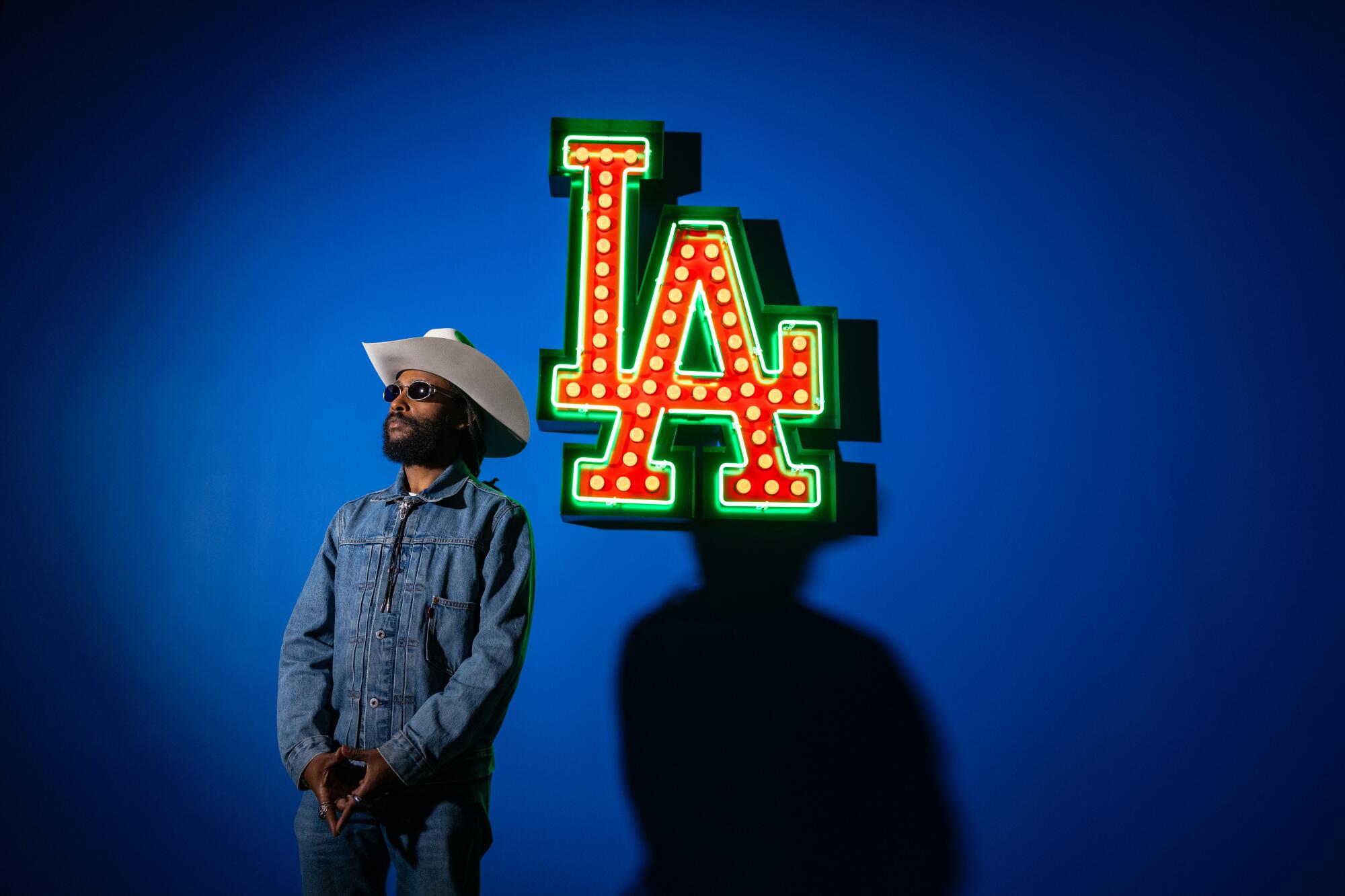
- Share via
Late last year, I developed a connection with one of Awol Erizku’s artworks somewhat by accident. I was on the dance floor at Living Room, one of L.A.’s newest member clubs and nightlife hotspots, being bathed in the fragmented, dazzling light of a disco ball in the form of Nefertiti’s bust. As the night grew more navy with time, I finally looked up, and was struck by the beauty and powerful presence of African royalty above me.
Erizku, a 36-year-old Ethiopian-born, Los Angeles-based contemporary artist, has most recently installed that artwork, “Nefertiti–Miles Davis,” at the California African American Museum as part of his first solo museum exhibition, “Awol Erizku: X.” Composed of new and recent works, the show is a celebration and reexamination of Afrocentric aesthetics — an approach to expression the artist calls “Afro-esotericism.” Malcolm X is at the heart of it all, his image anointing the walls and a photograph of his former home, boarded up with a sign advertising its rehabilitation, presented without comment. It’s a show about preserving Black history, about the spiritual implications bubbling beneath familiar objects with double meanings in the culture, from ice to bricks.
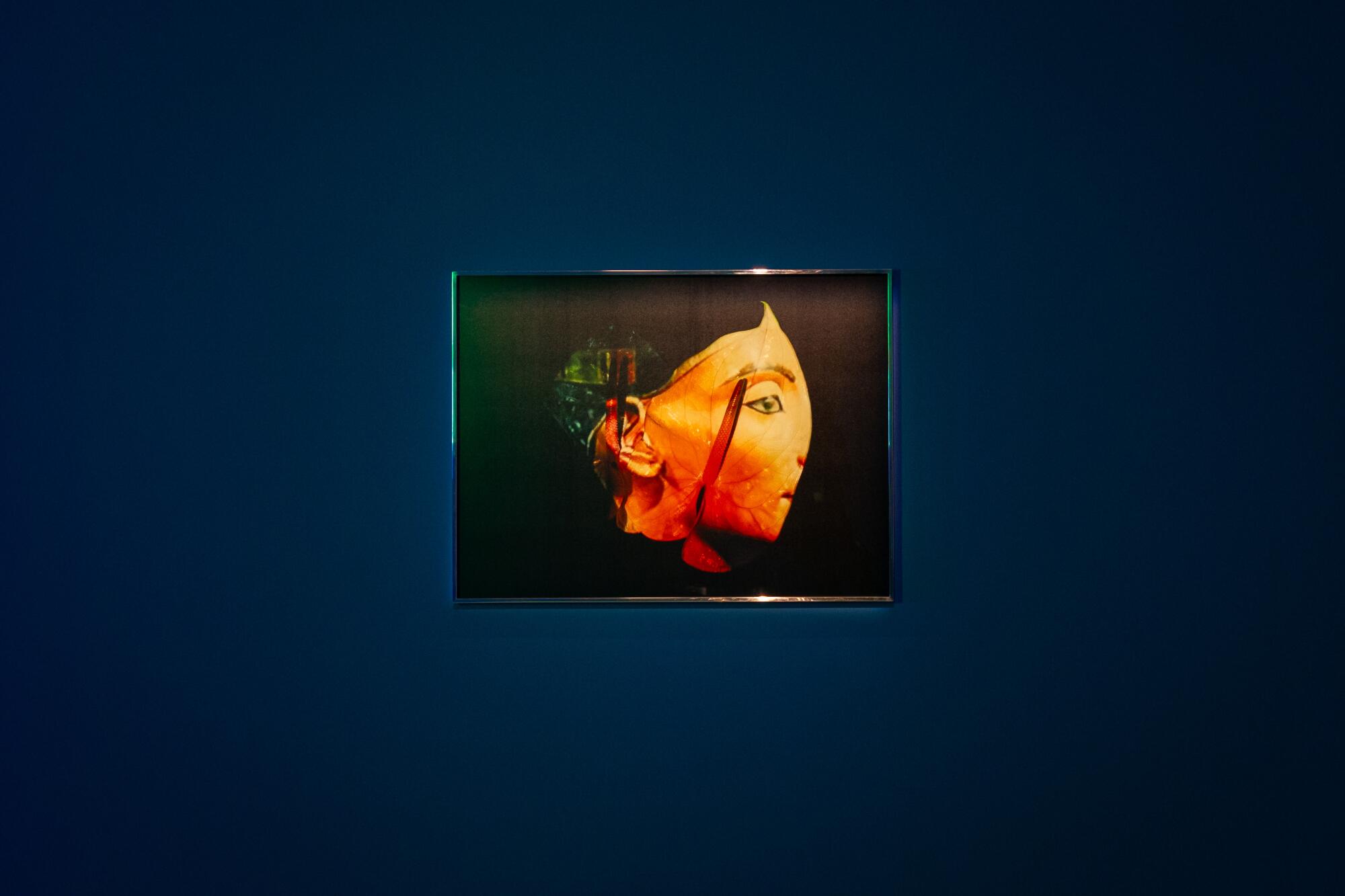
Elsewhere in Los Angeles, Erizku’s exhibition “Moon, Turn the Flames…Gently Gently Away,” his inaugural solo with Sean Kelly Gallery on view through July 3, features hypersaturated still lifes that reflect the beauty (flowers), temptations (money) and struggles (smoke) of cultural life in L.A., a city he has now lived in for 10 years.
Artists in “Imagining Black Diasporas” gathered for a special photograph, which will live on in the archives.
On the occasion of that opening, I met Erizku at Living Room again, but this time it was face-to-face and not through a chance encounter with his work. The multidisciplinary artist, who works across photography, sculpture, painting, installation, film and sound, was grounded, warm and most interested in eschewing the politics and oft-performative pleasantries of the art world in favor of genuine connection with the community of guests. Though we didn’t know each other, there was an instant familiarity, which is perhaps the most sacred, inexplicable part of the African diasporic experience: that sense of recognition, which is more a feeling than anything that can be adequately described. In this way, the very spirit of Blackness is art — a stirring beyond language. And it is this focus on the feeling of wordless understanding that guides Erizku’s approach to creation.
Evan Nicole Brown: Both of your L.A. shows hinge on a symbol: the five colorful, interlocking Olympic rings. Symbolism is such a deep and dominant part of your work: How do you approach adding your aesthetic to ready-made symbols — like the Olympic rings, the Hollywood sign, the L.A. Dodgers logo — which are familiar to us as viewers, in order to make them your own?
Awol Erizku: Symbols, for me, have become a way to communicate and have an immediate effect. So by simply turning the Dodgers logo and literally just swapping the colors to those of the Pan-African flag, I’m able to speak to Black folks directly. I think when you see that, you know that’s for you, you know that’s a unifying symbol. That’s what I’m after — symbols that we can use in a universal manner.
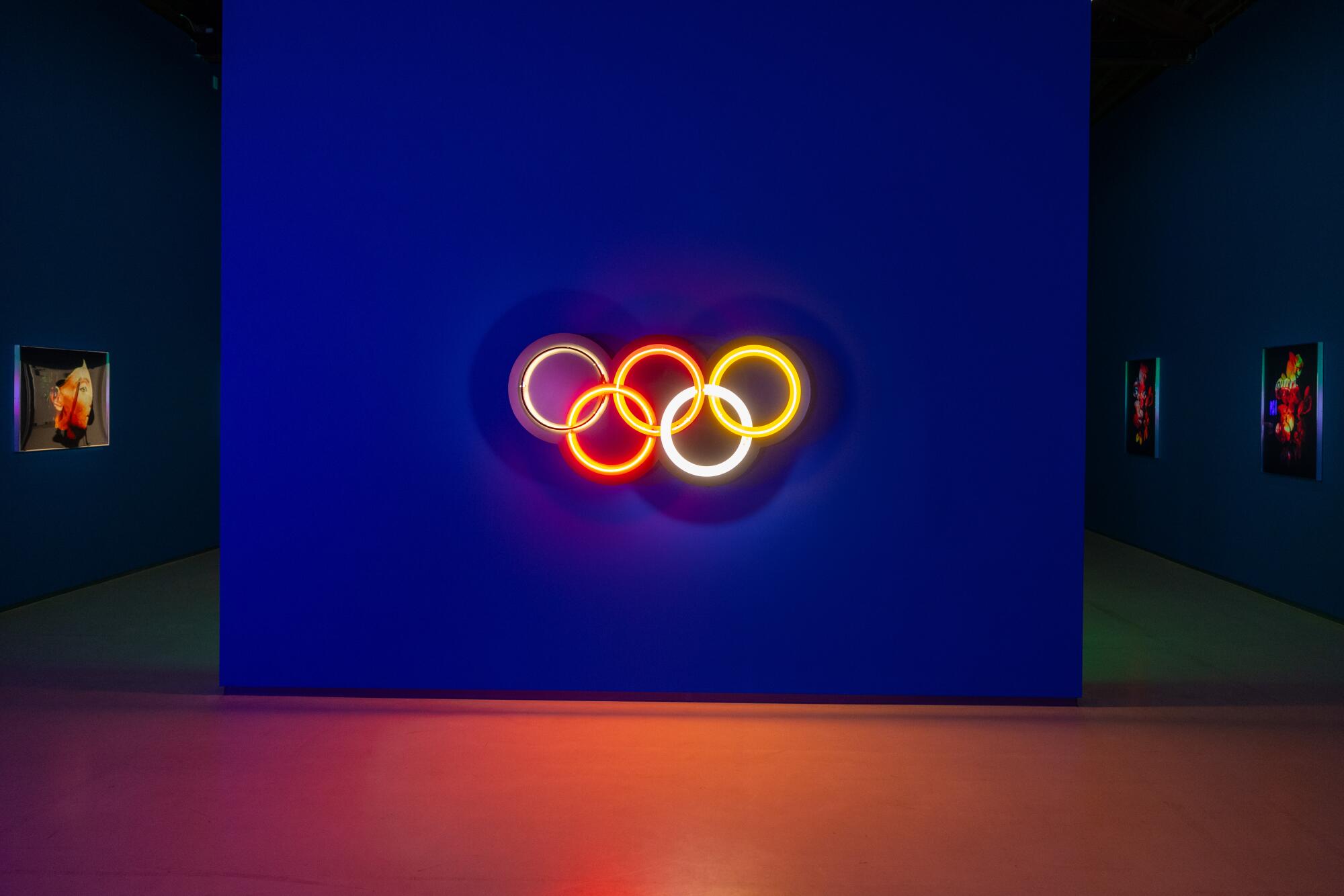
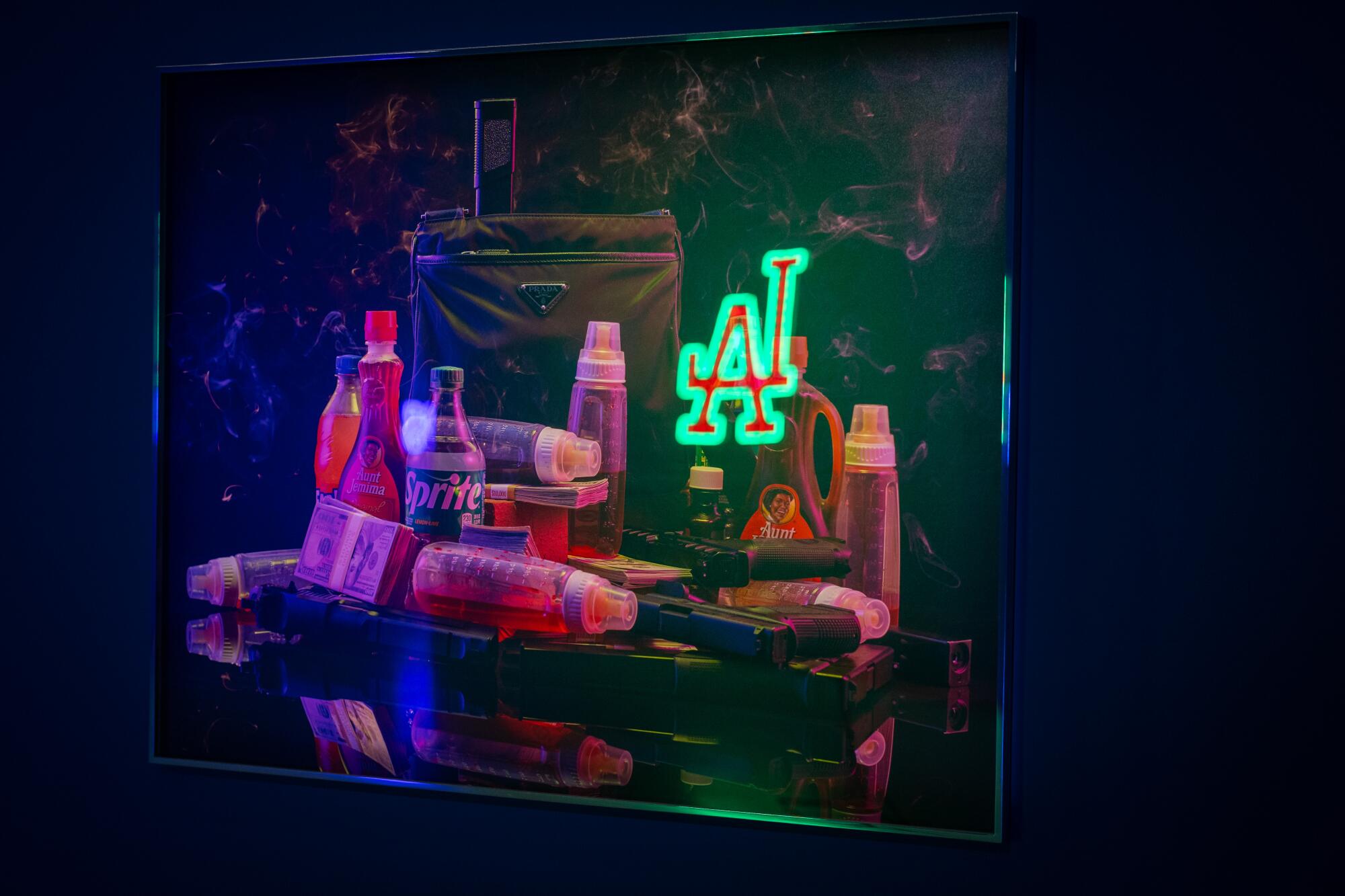
ENB: That just made me realize the true power of visual symbolism as a shorthand, as a way to say so much without saying anything at all. Even a color can be a shorthand to demonstrate something.
AE: That also resonates with the “Nipsey blue” in the background of the [gallery] show. I’ve said this in passing, but I thought about making [the show] a love letter for my son. And I still do think about it that way, because a lot of the topics in the exhibition, especially at the gallery, is a conversation that I think any father would have with their son. [I’m] looking back at some of the things that I’ve been thinking about a lot consciously, and I found a way to communicate that by distilling certain symbols to make juxtapositions that then gave a new meaning. Like the evidence markers and cowrie shells are two things that shouldn’t be together, but somehow by putting them together in this way, it creates a third, or new, meaning. [With those images], I’m looking at the killings of Sean Bell and Amadou Diallo, and the third subject is kind of open-ended, which is the sad reality. But with those two men in particular, I remember being a younger man living in New York and thinking about how it happened, when it happened and how people reacted to it.
On a deeper level, in my lexicon, I title the works in a way that isn’t so direct. The piece for Sean Bell, “Sean Bell - Shawny Binladen,” is actually the title of a Shawny Binladen song, which then complicates this narrative even further. And the title of [the piece for Amadou Diallo], “American Skin (41 Shots) - Bruce Springsteen,” is in reference to a Bruce Springsteen song, which again complicates the narrative even further because now you’re not just talking about police murder and rap, now I’m using someone from a different genre who’s also talking about police brutality in America. There’s a deeper concern and awareness of the ripple effects of police brutality in America as it relates to young Black men specifically.



ENB: How does your Ethiopian heritage figure into your work, particularly as you make artistic choices that connect the broader diaspora? In your images, I see you exploring police brutality on American soil, but also recurring motifs like cowrie shells, smoke and flowers seem to be more conceptual reminders of home, ritual, currency and cultural memory.
AE: The sad thing is — and this is why I feel these two subject matters have maybe been in my consciousness for so long — is that Amadou Diallo was Guinean, and Sean Bell was a foundational Black American, but to police you’re still a Black man at the end of the day, you know? So whatever qualms we may have on the nuance level, to the outside world we’re a monolith, even though we know we aren’t.
For me, that’s the nucleus of the work. It’s all about creating a language that we can use throughout the diaspora in a universal fashion. “Afro-esotericism,” an ideology that I’ve been building for the last [several] years, relates to my 2023 monograph “Mystic Parallax,” which shows you a version of Black aesthetics cohabitating and existing in the same universe; it’s far more interesting to create a new way of looking at the world by [using] the things that we already have exposure to.
ENB: How does the landscape of Los Angeles, the home of Hollywood and many other cultural exports, inform your practice, particularly your projects that engage celebrities and the concept of fame?

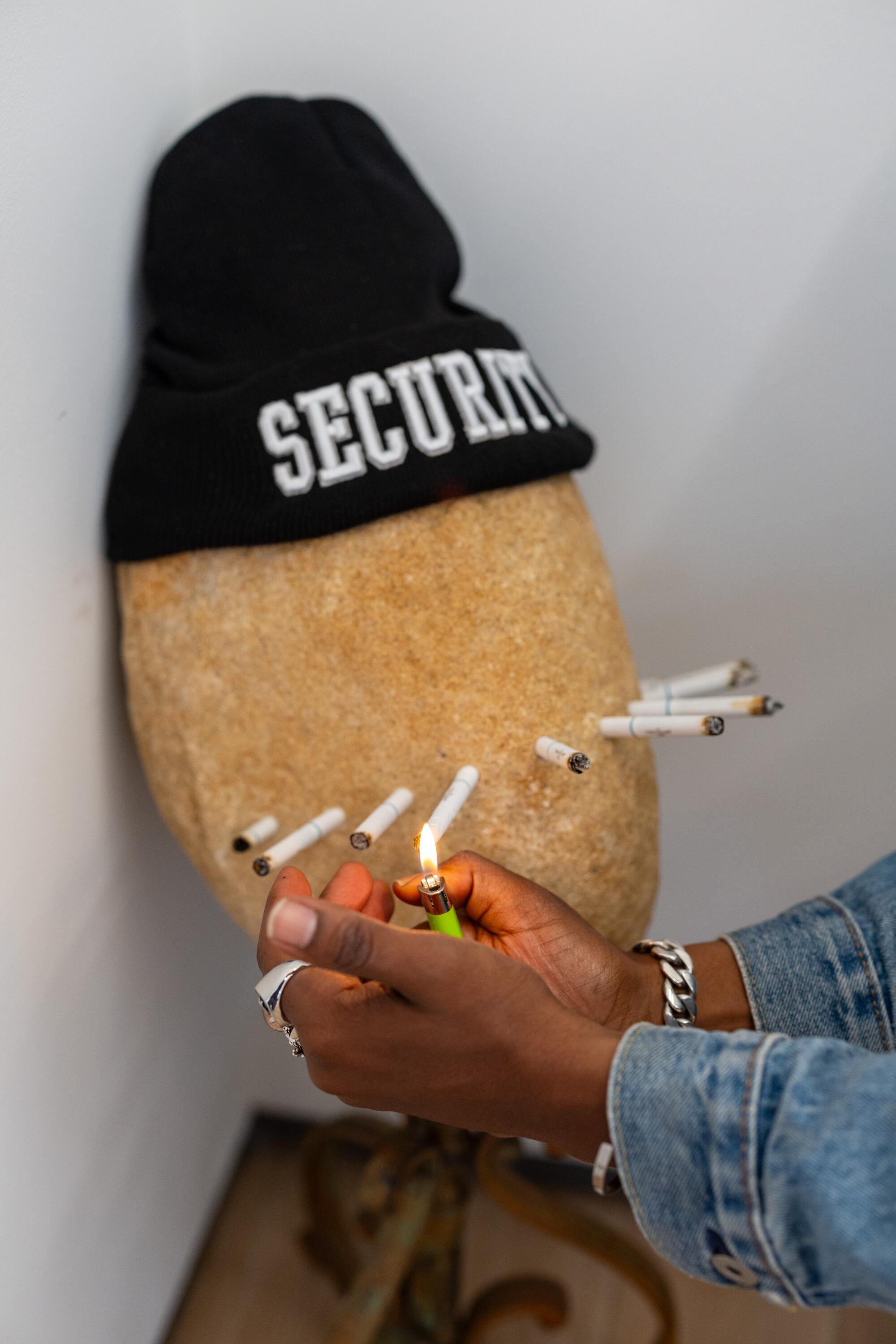
AE: I personally am distant from that world. I mean, there’s some work-related things that I do every once in a while, but as a whole, I went to school and I focused a lot on theory. So the commercial stuff really doesn’t hold that much water for me.
L.A. can be isolating, it can be welcoming, it can be territorial. It’s a multifaceted city; that’s what I love about it and that’s where I find the inspiration for most of these works. I find L.A. to be inspiring as an artist because it gives you a lot of room to breathe, and a lot of room to practice different things; it’s almost like an empty canvas that is just waiting to be filled with ideas.
ENB: I’m constantly thinking about the tension between the produced version of L.A. and the natural world of the city, and how the quality of light here from the sun contrasts with the artificiality of neon.
AE: When it comes to neon, I think it’s a medium that I’ll continue to work with until I can’t. I find neon to be this medium that uses light in a more poetic way.
A great example of that is “NO ICE”; it’s so simple, but you can really read into it. The duality and double entendres in hip-hop is so important and crucial. Why is “OPPS” in the style of the Cops [T.V. show] logo? If you know, you know, you know what I mean?
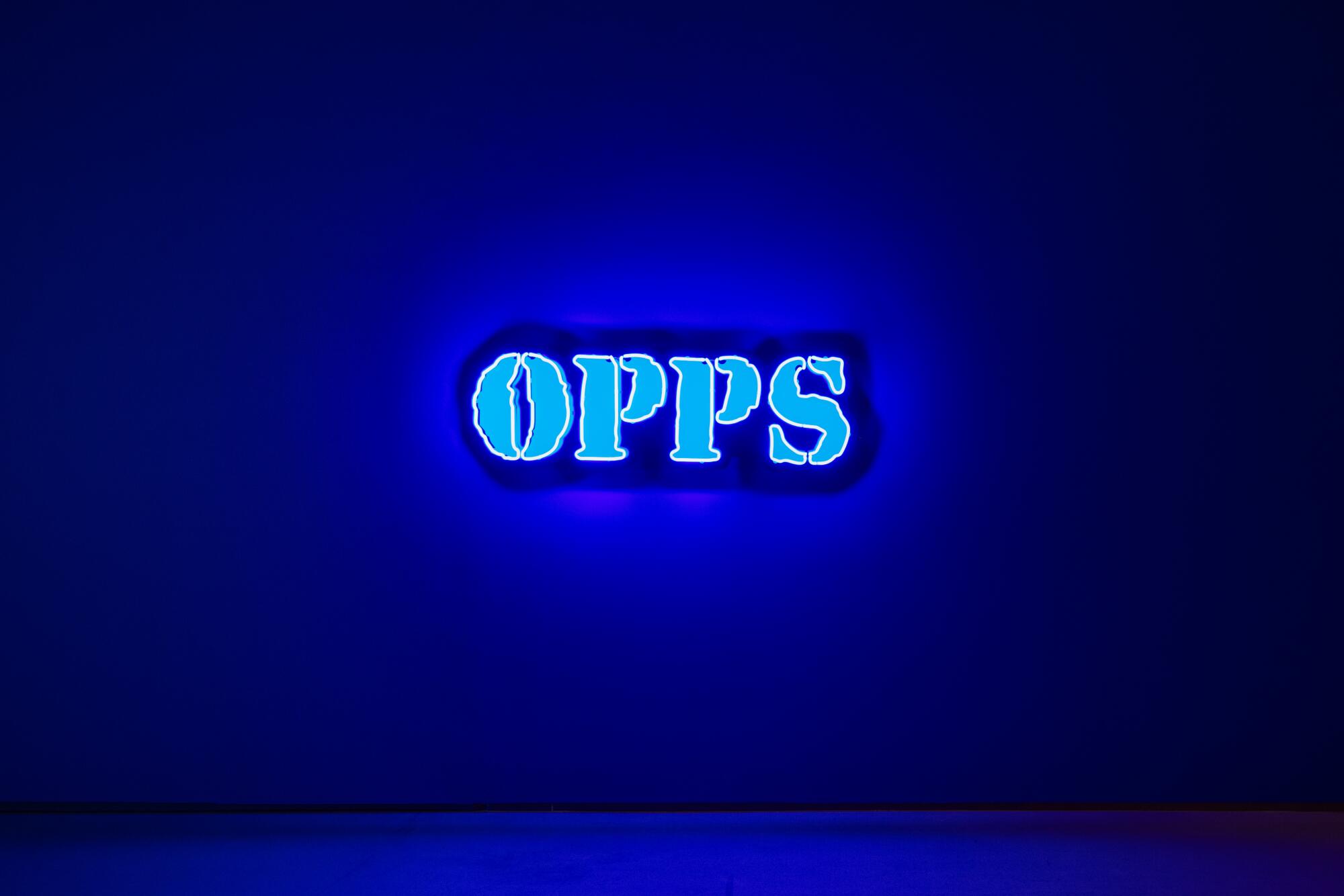
ENB: Let’s circle back to “Afro-esotericism,” which has to do with symbolism, spirituality and this legacy of mythmaking.
AE: It’s the intrinsic feelings, expressions, gestures, thoughts and just overall [experience] of being a Black human being on this planet, like the things that we already have in us. There are all these things that end up getting co-opted by people on the internet, but I’m more interested in the things that they can’t tap into, the things that they can’t steal. It’s an open source [ideology]; I’m open to people adding to it, to make some sort of atlas or an encyclopedia [with] knowledge of being.
ENB: The richness of Black culture is so special so I really resonate with that. But I am also curious about whether you create space in your practice for play — not to undercut the depth of all that you’re exploring, but I’m almost exhausted by Blackness being such a serious subject, and being so profound. It’s so fun seeing memes just about the way we laugh while running away from each other, you know? How do you leave room for that sort of register of Blackness in your work, too?
AE: That is precisely what I’m trying to get out. I’m merely saying, look at what our expansiveness can afford us.
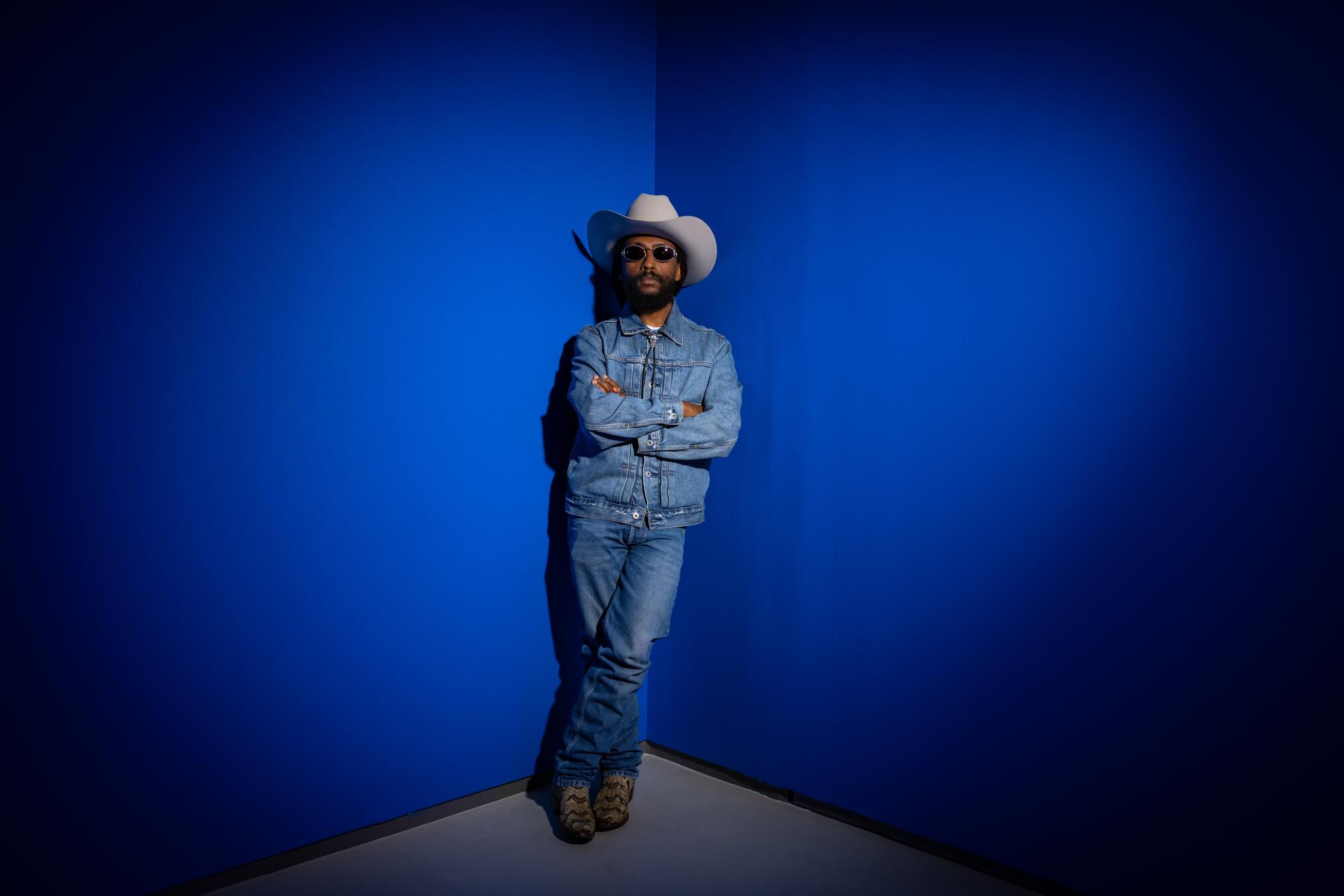
Evan Nicole Brown is a Los Angeles-born writer, editor and journalist who covers the arts and culture. Her work has been featured in Architectural Digest, Dwell, The Hollywood Reporter, the New York Times, T Magazine, Time and elsewhere. She is the managing editor of Contemporary Art Review Los Angeles and the founder of Group Chat, a conversation series in L.A.









